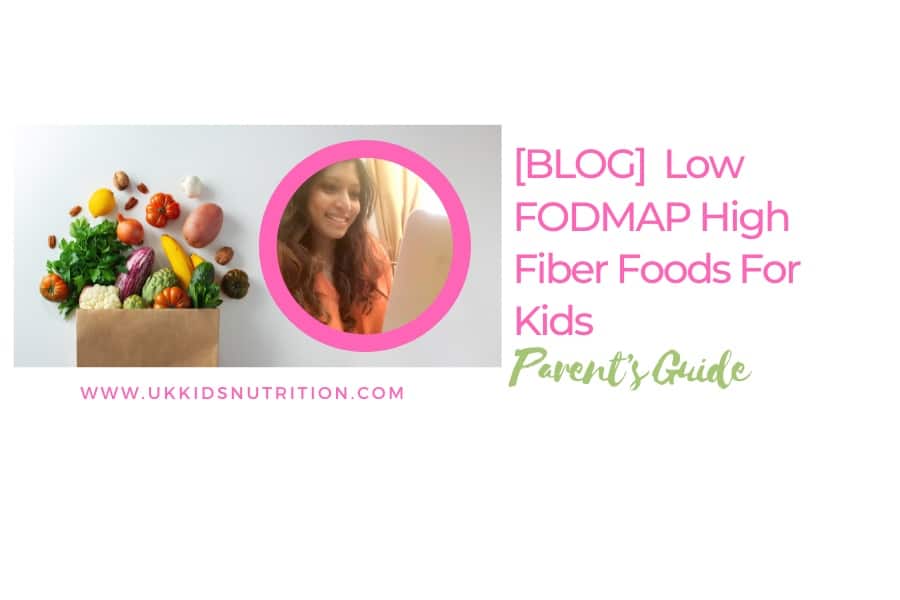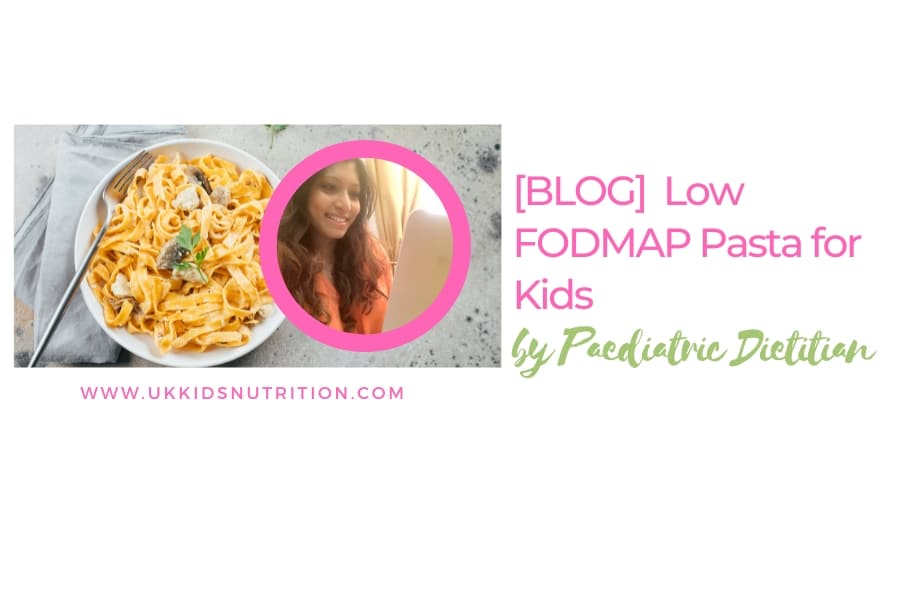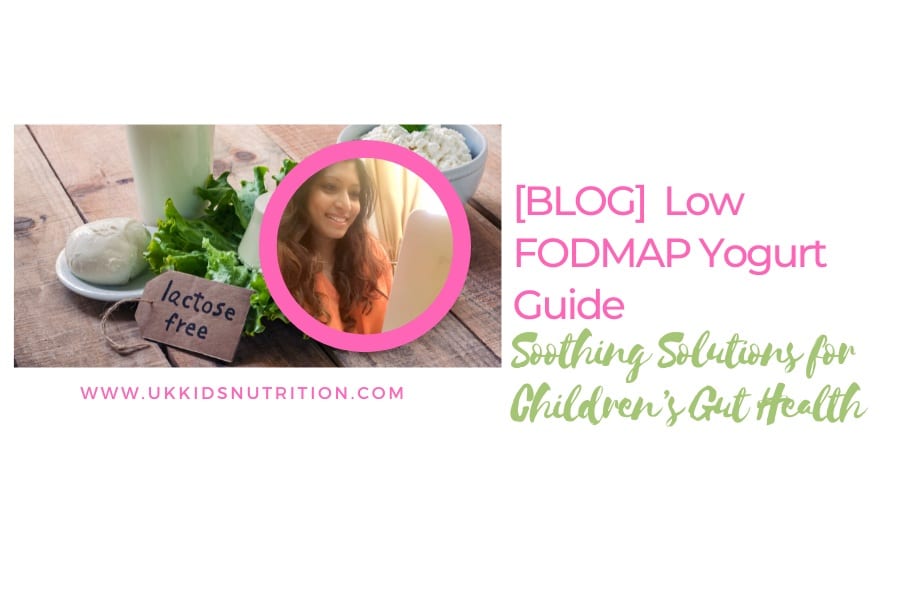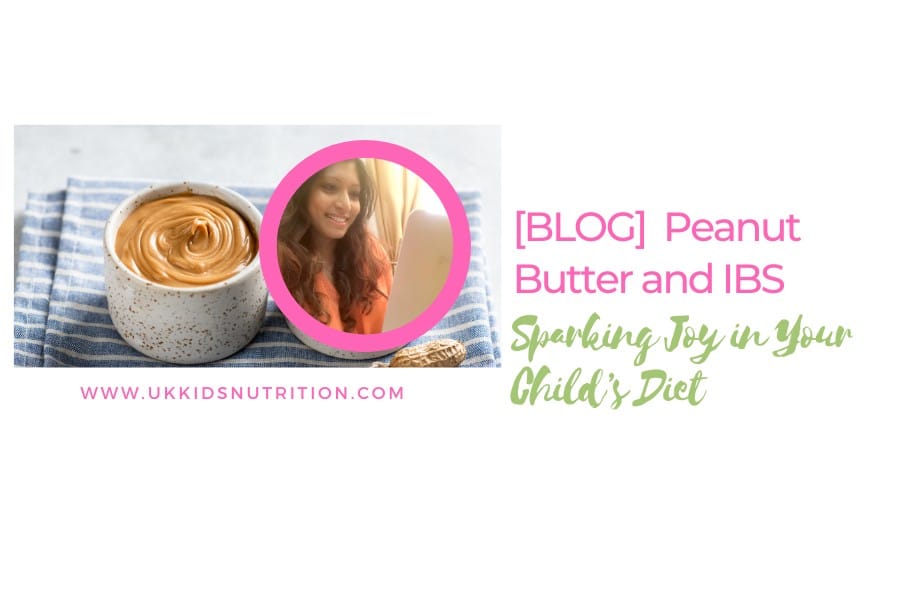Managing IBS in children requires careful dietary planning.
Introducing a trial of a high fiber, low FODMAP diet can alleviate symptoms effectively.
In this article we’ll explore how you can blend these nutritional strategies into your child’s daily meals, guided by a registered dietitian specializing in paediatric irritable bowel syndrome (IBS).
What is Fiber?
Fiber is vital for aiding digestion and ensuring softer stools, significantly improving gut health.
Soluble fibre and insoluble fiber from fruits, vegetables, whole grains and seeds play distinct roles in maintaining regularity.
However, integrating fiber within a low-FODMAP framework is essential, as specific fiber foods might trigger IBS symptoms.
By slowly adding high fiber, low-FODMAP foods and monitoring reactions, you can meet your child’s dietary needs, supported by insights from Monash University.

How Much Fiber is Needed for Children?
The amount of fiber your child needs to eat will depend on their age.
The goal is to help your child eat a diet rich in a variety of fibre-rich foods without exacerbating IBS symptoms and tricky poops.
Providing a diet rich in low-FODMAP servings of fruits and vegetables ensures they receive the right fiber intake for optimal health.
| Age (years) | Fibre Requirements (g/day) |
| Babies & under 2 year olds | No set requirements |
| 2-5 | 15 |
| 5-11 | 20 |
| 11-16 | 25 |
| 16- 18 | 30 |
Benefits of Fiber
Did you know that fibre is critical not only for digestion but also for general health?
Incorporating sufficient highfiber, low-FODMAP foods can ease their IBS symptoms.
By manipulating their intake of fodmap fiber foods, you’ll have better control of their symptoms like tummy pain, constipation or irritable bowel.
In adults, the benefits include a reduced risk of heart disease and better management of cholesterol and blood sugar levels.
For example, vegetable fibers, in particular, offer significant health advantages.
Therefore, helping children learn to eat a variety of fruit and vegetables is key for their gut health and long term health.
Fiber and the Low FODMAP Diet
The low FODMAP diet reduces IBS symptoms by limiting specific carbohydrates.
Including high fiber, low-FODMAP foods ensures your child doesn’t miss out on essential nutrients.
Identifying and reintroducing non-triggering foods helps maintain a healthy gut.
Remember, the gentle version of the low FODMAP diet is a short term trial so the key is to get familiar with low FODMAP servings (so you don’t have to avoid all foods unnecessarily).
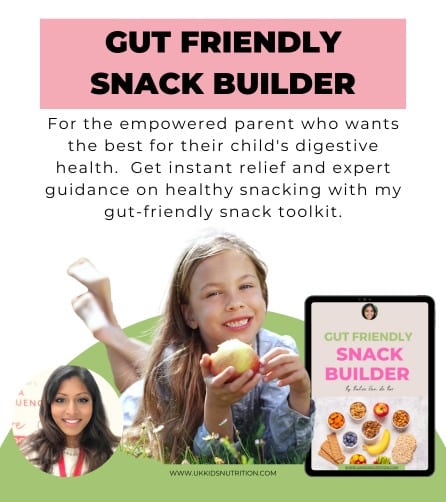
How to Get Enough Fiber on the Low FODMAP Diet
Starting with kid-friendly, low FODMAP foods like oranges and carrots can help manage your child’s tummy troubles.
Adjust the serving sizes of fibre foods slowly to prevent any digestive upset.
Monitor serving sizes to avoid symptoms like bloating and gas.
Foods like green beans, rich in soluble and insoluble fibers, can be increased in portion sizes carefully to prevent upsetting your child’s stomach.
My Happy Belly Formula provides structured guidance to help you navigate this process, offering delicious low FODMAP recipes that fit within dietary restrictions.
High Fiber, Low FODMAP Foods for Your Child
Offer a variety of high-fiber, low-FODMAP fruits and vegetables to diversify your child’s diet.
Include fibre rich, low-FODMAP grains while monitoring for any sensitivities.
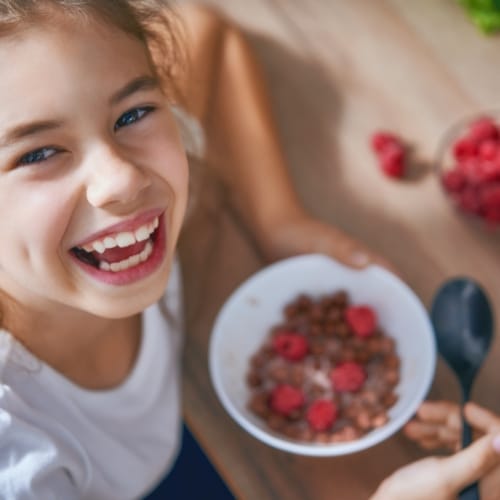
High fiber low FODMAP fruits
| Fruit | Fibre (g) per 100g |
| Blueberries | 1.5 |
| Raspberries | 3.7 |
| Strawberries | 3.8 |
| Orange | 1.2 |
Please note that this list is not exhaustive. Berries and citrus fruits mostly contain low FODMAP fiber.

High fiber low FODMAP vegetables
| Vegetable | Fibre (g) per 100g |
| Carrots | 3.9 |
| Aubergine (Egg plant) | 3.0 |
| Green beans | 3.4 |
| Mushrooms (common) | 0.7 |
Fruit and vegetables also contains a range of vitamin and minerals so encourage your child to eat at least 5 different servings each day.
High fiber low FODMAP breads, cereals and pasta
| Bread, Cereals and Pasta | Fibre (g) per 100g |
| White bread | 2.5 |
| Sourdough bread | 2.4 – 3.1 |
| Wholemeal bread | 7.0 |
If your child is sensitive to the fructans in regular bread, then look for gluten-free options.
Many are fortified with fiber but you can also consider offering smaller FODMAP serving sizes.
Whole Grains: Quinoa, oats, and brown rice are excellent sources of fiber and are generally well tolerated.
Low FODMAP whole grains
| Wholegrains | Fibre (g) per 100g |
| Brown rice, wholegrain, boiled | 1.5 |
| Brown rice, Basmati, boiled | 1.2 |
| Rice, white, long grain, boiled | 0.5 |
| Pasta, wholewheat, boiled | 4.2 |
For accurate figures, always refer to the fibre per 100g at the back of the packaging.
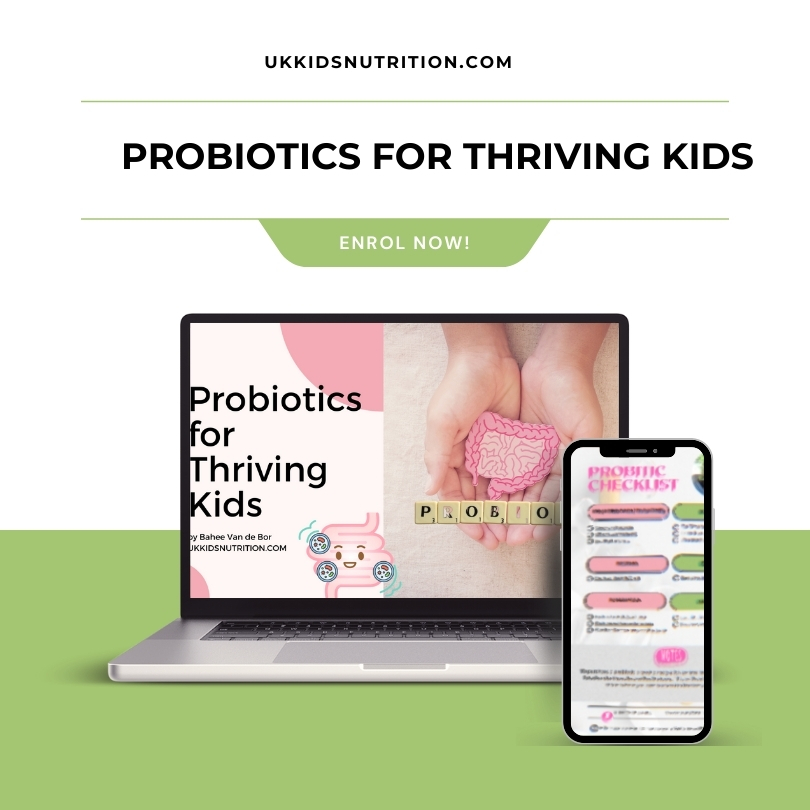
How to Increase Fiber Safely
Gradually increase fiber in your child’s diet to allow their digestive system to adjust, reducing the likelihood of triggering constipation or diarrhoea.
Tailor dietary changes to your child’s unique needs, using a food and symptom diary to track their reactions and adjust as necessary.
Tailoring the Diet to Your Child
Firstly, remember that every child is unique. What works for one may not work for another.
Therefore, it’s important to monitor your child’s reaction to different foods.
Additionally, adjusting their diet accordingly is an important part of this personalised process.
Keeping a food and symptom diary can be a helpful tool in identifying which foods are well-tolerated and which to avoid.
Bottomline
Adapting your child’s diet to include high fibre, low-FODMAP foods can be empowering, laying the foundation for healthier eating habits.
If you’re uncertain where to start, consulting with a paediatric dietitian familiar with IBS can provide personalized, effective strategies.
If you feel overwhelmed, a paediatric dietitian can offer tailored advice, supporting your child’s nutrition and happiness.
With professional guidance, you can support your child’s health and happiness despite IBS challenges.
Bahee Van de Bor is a registered paediatric dietitian, specialising in gut health, food intolerance and fussy eating.

Let Me Help
If you’re seeking more personalised guidance or in-depth information, consider exploring my specialized programs and resources:
- Online Course: “Happy Belly Blueprint” – This comprehensive course offers detailed strategies and insights to enhance gut health and solve tummy troubles in children.
- 1-2-1 Programme: “Happy Belly Club” – Tailored for individual needs, this program provides one-on-one support to master the challenges of IBS in kids.
- FREE Guide: Don’t miss out on the valuable insights in “Heal Tummies With Smart Snacks”. Download this free guide to start making positive changes today.
- CHAT With Bahee: Book a free initial consultation to discuss the Happy Belly Club.
Each of these resources is designed to empower you with the knowledge you need to support your child’s gut health.
